Pining for a Deck in Brooklyn? Here's What You Need to Know
Even the most basic deck requires permits and must adhere to strict code requirements to be legal in Brooklyn.

An ipe deck in Park Slope. Photo via Urban Exteriors
Building a backyard deck might seem like a simple home-improvement project in most places. But in Brooklyn, where even the most basic deck requires permits and must adhere to strict code requirements to be legal, a deck can take months and cost tens of thousands of dollars to build.
“Twenty years ago in Brooklyn, you could just do pretty much whatever you wanted and nobody cared. The codes were lax, nobody filed, and they didn’t hassle anybody,” said Steve Rayboy of Urban Exteriors. “Now, it’s so strict I’m glad I’m close to retiring.”
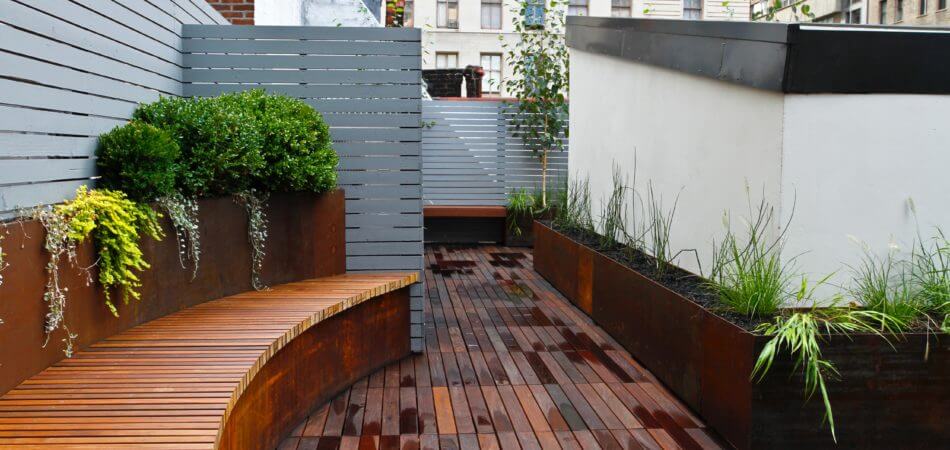
Decks, classified by the Department of Buildings as roofless raised floors that are level with the first story or below of a house, must be made from non-combustible materials if they fall within three feet of the property line. That means that most legal decks that span the parlor level of a townhouse are made from steel frames with wood components built on top.
While many homeowners skirt the law and build or restore wooden decks, an illegal deck can be an obstacle when it comes time to refinance or sell the property. And even a legal deck without a permit is subject to a $5,000 fine if a disgruntled neighbor reports it to the DOB.
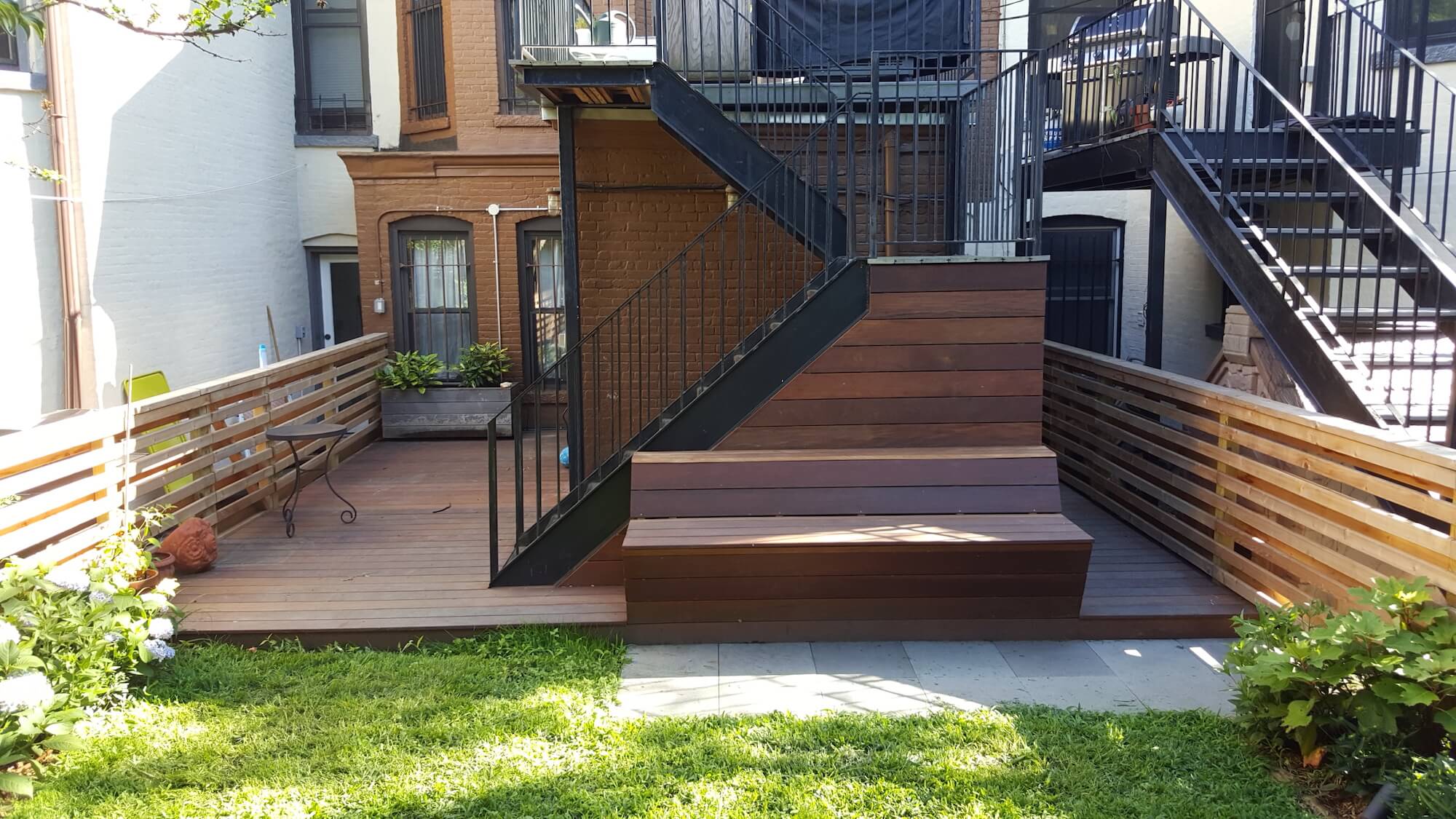
“I always recommend my clients get an architect and gets drawings and an expeditor and file,” Rayboy said. “People think they can call me now and get a deck in two weeks, or even a month. If you start now, you’ll have a deck in February.”
For budget-conscious homeowners with existing wooden decks, Jonathan Yevin of M.U.D. Landscaping suggests exposing the frame to see if it is salvageable.
“There’s no point in rebuilding it if it serves the purpose that it needs to serve. It depends on how code-minded and budget-minded our client is,” Yevin said. “You don’t have to build the Brooklyn Bridge under your deck.”
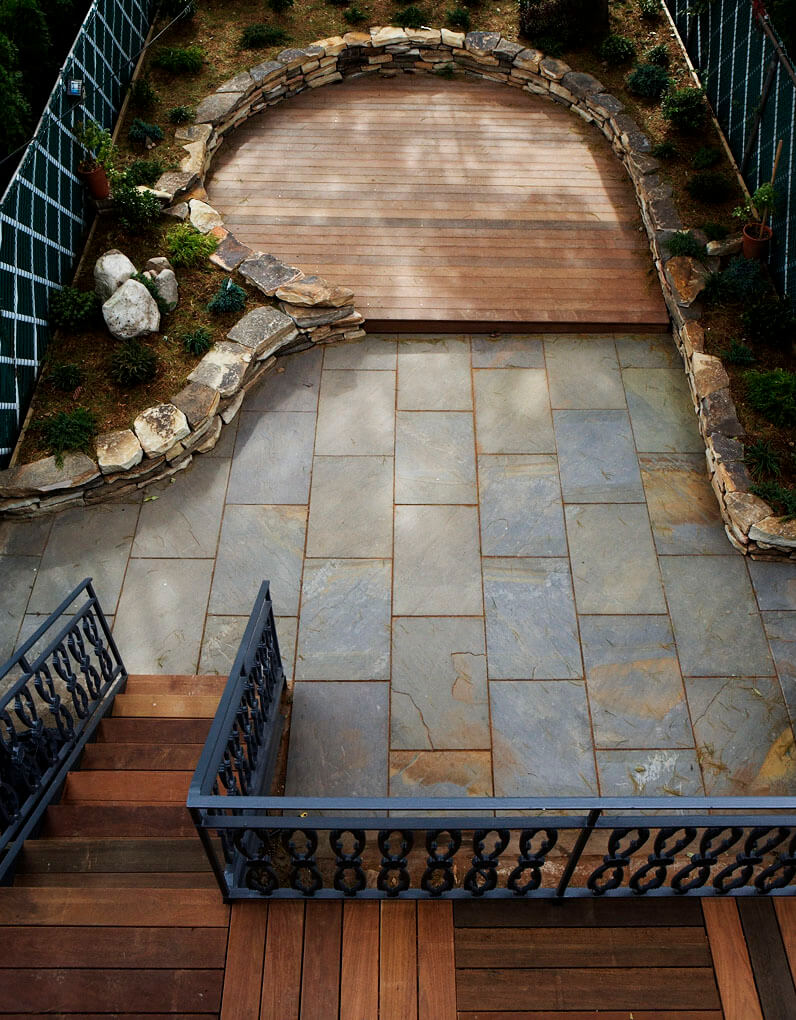
When planning the wooden components of a deck, builders recommend the Brazilian wood ipe or other dense South American hardwoods, like Cumaru or Garapa, for their strength and durability.
“If you drop a foot of ipe on the ground, it sounds like you dropped ceramic,” Yevin said. “It’s still the most expensive. I’ve been building decks for 20 years, and I used to tremble before proposing hardwood costs to clients because the cost is high. But you look back at something you built in ipe 10 years ago and it looks exactly the same.”
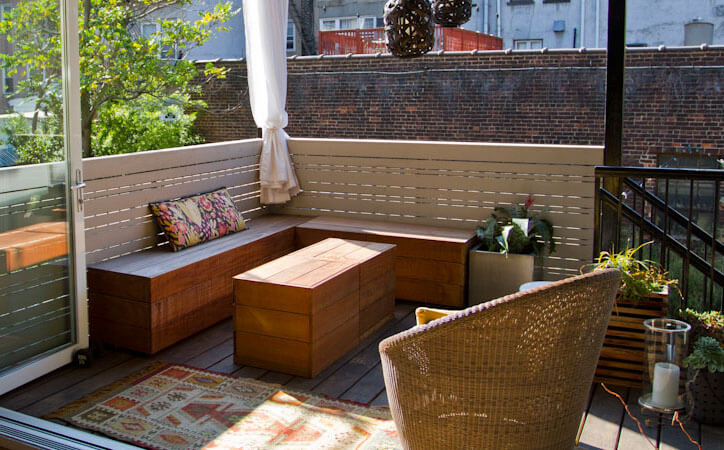
Composite wood products, like the brand Trex, are slightly cheaper than ipe but don’t hold up as well as real wood, builders say. Cedar and pressure-treated pine also are less durable and require maintenance.
“I’ll do composite wood but I frown upon it,” said Susan Hager of Sketch and Hammer. “It’s not real wood and it’s not going to hold up after a few years. Ipe is beautiful and it lasts forever. It costs 40 percent more than treated pine, but then consider the amount of years you have to seal pine.”
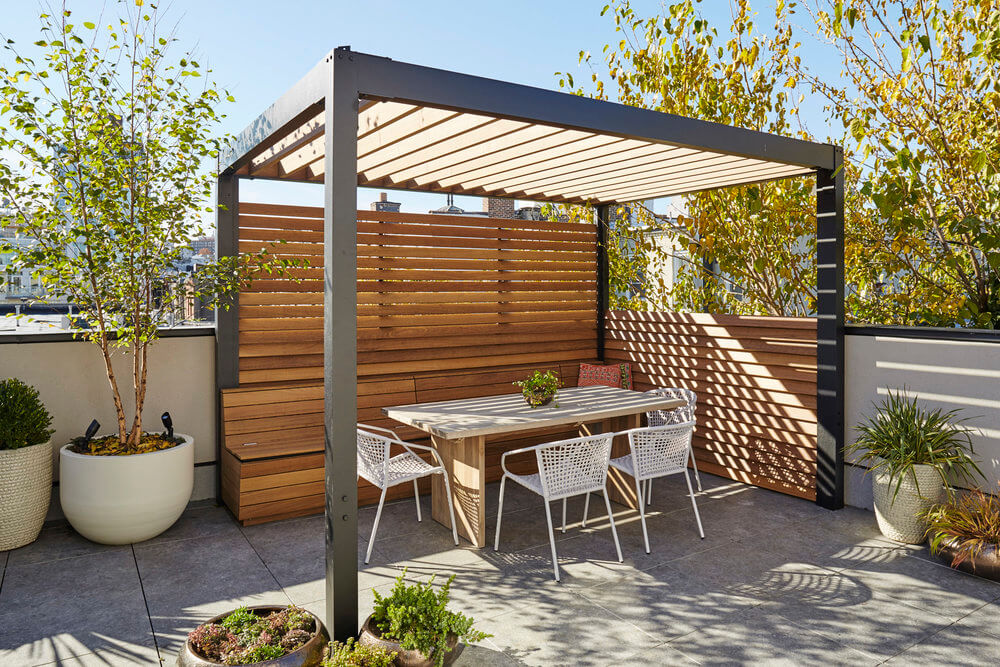
For a basic 8-by-18-foot parlor level deck made of steel and ipe with a straight staircase to the garden, homeowners can expect to spend $15,000 to $20,000 on labor and materials, Rayboy said. That doesn’t include the cost of an architect or expeditor. And many homeowners opt for additional features, like built-in seating or pergolas.
“Pergolas have always been around, and now what people like are Coolaroos, a triangular shaped sail” that serves as a sunshade, Hager said. “We put up steel poles with hooks on them and the sail can grab the hooks and be taken down in high wind.”
For railings, builders recommend steel vertical railings for homeowners with children who might be tempted to climb horizontal cables or bars.
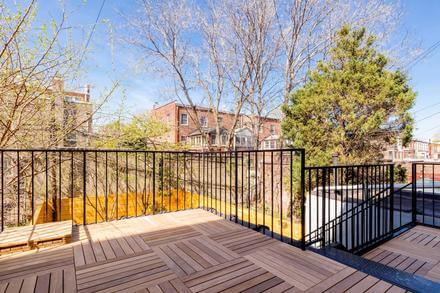
“More and more, we’re using built-in benches instead of railings,” Yevin said. “Horizontal steel cable is the way you can look from a deck into the yard with minimal obstruction. Or you can do a simple black metal baluster every four inches.”
Homeowners should expect to wait three to eight weeks for a permit once plans for a new deck are submitted to the DOB, Hager said. And those in a historic district must also await approval from the LPC.
“People get discouraged,” she said. “They buy a house in Brooklyn, or they buy into a co-op. and they find out the hoops they have to go through.”
Businesses Mentioned Above
[blankslate_pages id=”d57ea8dda18a22, d53a08f976f740, d55e08c8718f31, ” type=”card” show_photo=”true” utm_content=””][/blankslate_pages]
Related Stories
- Living Green Walls of Plants Refresh Brooklyn Homes
- 7 Tips for Beautiful Window Boxes All Year Round
- 6 Things You Must Know Before Installing a Fence
Email tips@brownstoner.com with further comments, questions or tips. Follow Brownstoner on Twitter and Instagram, and like us on Facebook.





What's Your Take? Leave a Comment